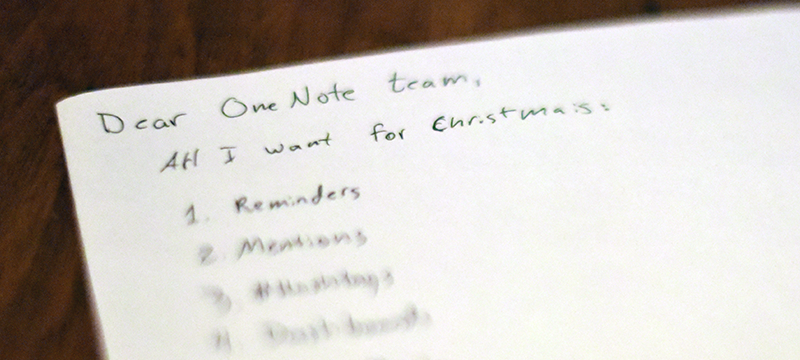*Disclaimer: I understand that there are third-party add-ons for OneNote, but users should not need to go through all those extra steps to get some of these features.
New features to Stay Competitive
Reminders
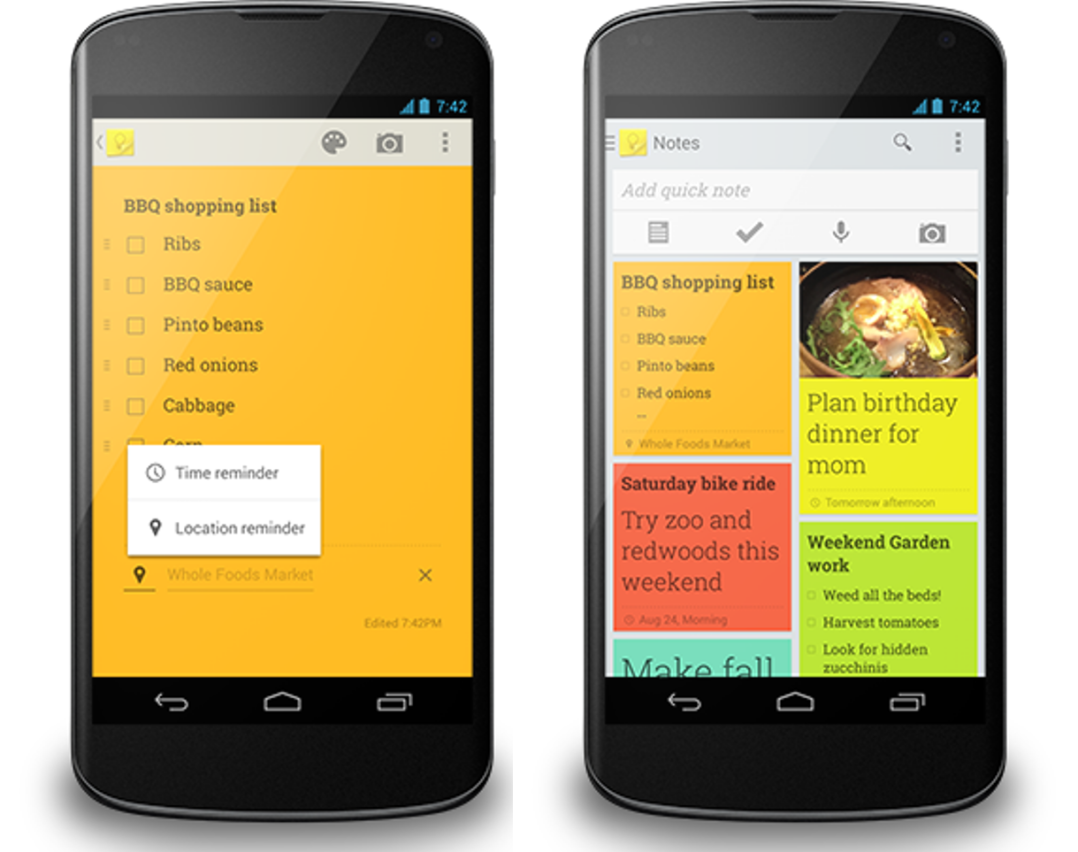
To-do lists and task trackers are a dime a dozen these days. In fact, Microsoft has Outlook Tasks, Wunderlist, Planner, OneNote checkboxes, and now in development Project Cheshire. With all these different tools, there is no cross-platform way to get reminders in OneNote. Bottom line, OneNote needs some way to remind users to revisit a specific spot in their notes.
In the same vein as reminders would be location-based notes. Many times, a page, section, or notebook is only useful at a specific location or locations. The ability to make notes easily accessible depending on location would go a long way to making OneNote quicker and easier to use. Google Keep figured this out and has had the ability to set location-based reminders to notes for years now. I know many people who shop around and their note apps mention reminders are on their wishlist.
Mentions
Office 2016 was a renewed focus on teamwork and helping teams be more productive. The release brought a huge list of improvements to Word, Excel, and PowerPoint and nothing else. OneNote 2016 has been left in the cold for years now and only receiving minor features and tweaks. Outlook Groups created team notebooks, but there is no way to mention teammates and draw their attention to a specific point in the team notebook. This type of “@” mention is showing up in Outlook and it needs to come to OneNote.
Hashtags
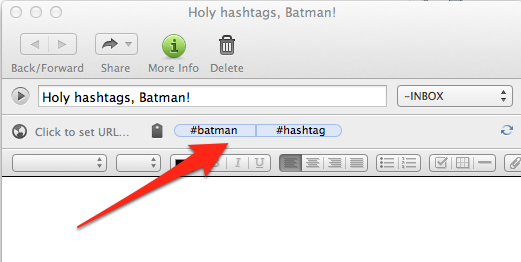
Love them or hate them hashtags are here to stay. Tagging information with descriptive keywords helps find information and keep pages that span sections connected. Competitive applications like Evernote have excellent tag support, which should be in OneNote. Tags could also be added to the dynamic dashboard to make them easy to find and quick to access.
Dashboard

OneNote offers a huge range of different ways to organize notes and keep them exactly where you want them. However, this means constantly navigating up and down through notebooks to find the page you want. Building your own dashboard is an option but becomes tedious to maintain. Being able to favorite pages to a dashboard which updates with snippets of the page and accessible on any platform is sorely missing from OneNote. The iOS app allows for pages to be pinned to the top of the recent list and in typical Microsoft fashion this feature does not appear in OneNote 2016 or the Windows Store app.
Like a dashboard for each section, a table of contents could act as a starting location and splash page. OneNote needs a more dynamic table of contents feature, which would be just like the dashboard for a section. Tables of contents can become the starting point for teams and show updates and changes.
Smarter Summary Page
Find-Tags scourers OneNote for tags, building a summary in one place of all the tags or just the to-do items. While this feature is great, the summary page it creates is a dummy static page. The OneNote team should make pages that are not only flexible and editable, but also offer specific capabilities such as finding all the to-dos in the section. These smart pages that update automatically can be used as a dashboard to stay on top of all the different on-going projects.
Change existing features to behave as expected
Photo Tools
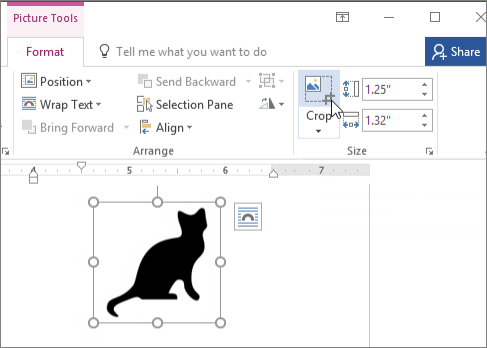
All the Office programs have a consistent set of tools for manipulating photos, except OneNote. Compared to all the other programs, OneNote is the primary program I insert images into. OneNote lacks the ability to crop, straighten, adjust color, cut out the background, and add a border. These features would be most useful in a note-taking application like OneNote, but they are missing. This has been on my wishlist ever since I have been using OneNote.
Comments
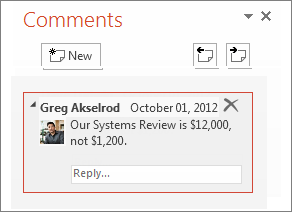
While the OneNote team is building mention support, they should include comments as well. Currently there is no way to comment on a note without just adding extra text to the note. This can get messy. For example, if there is a question about meeting notes or a request for more clarification, then the request either needs to be done via a different application or more text needs to be added to the meeting notes, which are not actually meeting notes. The comment system present in Word and PowerPoint would be sufficient.
Smart Tags
Tags in OneNote seem to have promise but fall short of being useful. Tags like phone, address, password, website, movies to see, music to listen to, etc. do nothing and change the tagged content in no meaningful way. When tagging a phone number, it should become actionable and the same with address, websites. Tags like password should disguise the text and maybe even prompt the user to secure the section.
Conclusion
There are many more improvements that could make OneNote easier to use that have not been mentioned in this article. Things like setting page size while letting the page length be infinite; code markup. While these things should be added, they do not address the fundamental flaw of OneNote, which is how motionless the platform continues to be.
The OneNote team at Microsoft must be aware of these shortcomings but it has a specific vision for its product. OneNote has the potential to balloon into a massive expense for Microsoft with little opportunity for revenue, and overwhelming features, so it is understandable that the team would need to keep the product manageable.
This brings me to the biggest issue with OneNote and that is communication about the future of the platform. If Microsoft sees OneNote 2016 as the peak of features and capability and will not expand past that, then it needs to clearly state that. Currently, all the updates released by the OneNote team have been bringing OneNote 2016 features to the Windows Store version. I know I am not alone in wishing there was more communication and a clear roadmap. I hope the future will bring many improvements and wonderful features, but I expect to see minor tweaks and old features coming to the new app for the foreseeable future.




